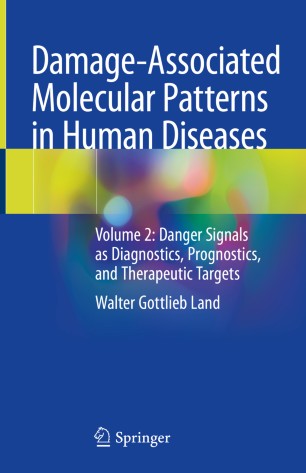

Most ebook files are in PDF format, so you can easily read them using various software such as Foxit Reader or directly on the Google Chrome browser.
Some ebook files are released by publishers in other formats such as .awz, .mobi, .epub, .fb2, etc. You may need to install specific software to read these formats on mobile/PC, such as Calibre.
Please read the tutorial at this link: https://ebookbell.com/faq
We offer FREE conversion to the popular formats you request; however, this may take some time. Therefore, right after payment, please email us, and we will try to provide the service as quickly as possible.
For some exceptional file formats or broken links (if any), please refrain from opening any disputes. Instead, email us first, and we will try to assist within a maximum of 6 hours.
EbookBell Team

4.4
52 reviewsThis book is a continuance of the topic: “DAMPs in Human Diseases”, the basics of which were described in a first volume by the same author. This second volume presents our current understanding of the impact of sterile stress/injury-induced innate immune responses on the etiopathogenesis of human diseases by focusing on those diseases that are pathogenetically dominated by DAMPs, i.e., on polytrauma, various solid organ injuries (brain, lung, kidney, liver), atherosclerosis, and cerebro-cardiovascular diseases.
Our growing understanding of the pathogenetic function of activating DAMPs and suppressive DAMPs (“SAMPs”) is used as a point of departure to explore how these molecules can be used as biomarkers to extend and improve current diagnostic and prognostic modalities.
Moreover, this new knowledge about the pathogenetic function of DAMPs and SAMPs is taken as a sound and plausible reason for discussing their implications for present and future treatment of the diseases addressed here. In this context, the focus is on the potential of DAMPs as future therapeutic targets and SAMPs as future therapeutics, applied in strict compliance with safety precautions, as also recommended in this work.
The book is intended for professionals from all medical and paramedical disciplines who are interested in applying innovative data from inflammation and immunity research to clinical practice. The readership will include practitioners and clinicians working in the broad field of acute and chronic inflammatory/fibrotic diseases, in particular, traumatologists and intensivists; neurologists and neurosurgeons; cardiologists and cardiac surgeons; pulmonologists and thoracic surgeons; vascular surgeons; nephrologists; gastroenterologists and hepatologists; and pharmacists.
Also available: Damage-Associated Molecular Patterns in Human Diseases - Vol. 1: Injury-Induced Innate Immune Responses